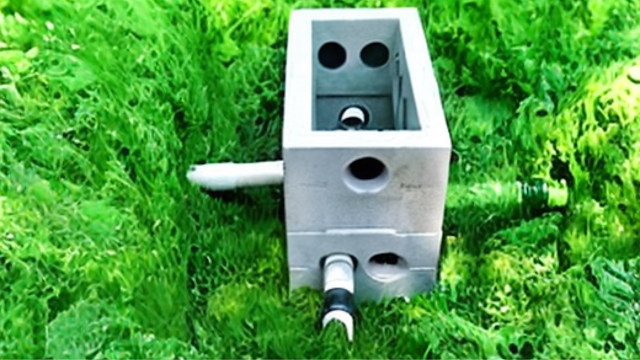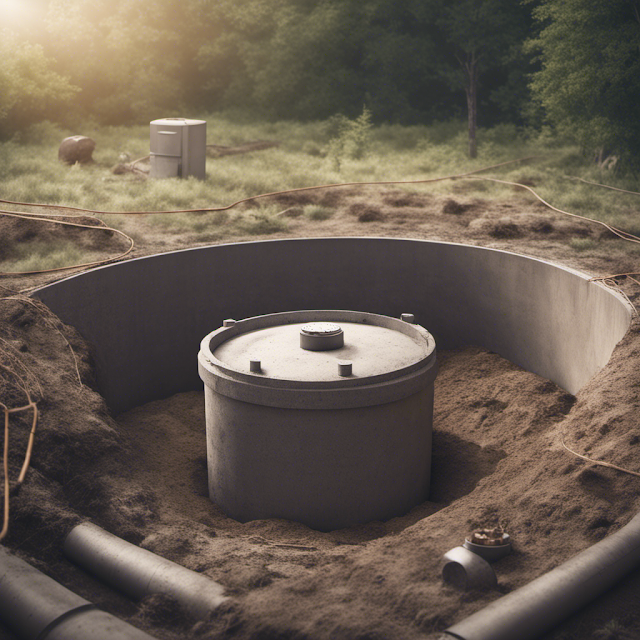Unveiling The Secrets Of Perc Test For Septic Systems: Mastering Soil Percolation Tests For Flawless Performance!
 |
| Perc Test For Septic Systems |
Are you curious about the secrets behind the perc test for septic systems? Do you want to master soil percolation tests to ensure flawless performance?
Look no further, as this article will unveil all the details you need to know.
In the world of septic systems, a perc test is crucial in determining soil absorption capabilities. By understanding how water percolates through the ground, you can assess if your chosen location is suitable for installing a septic system. This test provides vital information on the rate at which water drains from the soil and helps in designing an efficient wastewater disposal system.
To conduct a successful perc test, certain steps must be followed meticulously. From digging proper test pits to measuring groundwater levels, each process plays a significant role in obtaining accurate results. Interpreting these results correctly is equally important as it determines whether your septic system will function flawlessly or encounter issues down the line.
By mastering these techniques and ensuring optimal performance of your septic system, you can create a safe and healthy environment for your home or business.
So let's dive into the secrets behind perc tests and unleash their full potential!
Understanding the Importance of a Perc Test
You need to understand the importance of a perc test in order to ensure flawless performance of your septic system. The perc test, also known as a soil percolation test, is a crucial step in the process of installing a septic system. It determines how quickly the soil can absorb water and helps determine the appropriate size and design of your system.
One key aspect to consider is the importance of soil composition when conducting a perc test. Different types of soil have varying abilities to absorb water. For example, sandy soil tends to have good drainage capabilities, while clay soil has poor drainage. Understanding the composition of your soil will help you determine if any modifications are needed for optimal septic system performance.
Additionally, several factors can affect perc test results. These include the level of groundwater table, slope stability, and even vegetation cover on your property. The groundwater table refers to the level at which water naturally saturates underground. If this level is high, it can hinder proper drainage and impact the results of your perc test. Slope stability is another important factor as it affects how water flows through the ground. Finally, vegetation cover plays a role in preventing excessive evaporation and promoting better absorption.
By understanding these aspects and conducting a thorough perc test, you can ensure that your septic system functions flawlessly for years to come. It allows you to make informed decisions about sizing and designing your system based on accurate data regarding soil composition and other influential factors. So remember, taking the time to comprehend the significance of a perc test will ultimately lead to an efficient and trouble-free septic system installation process.
How the Perc Test Determines Soil Absorption
Understanding how the perc test measures the ability of soil to absorb water is key to a successful septic system installation. The perc test evaluates the soil composition and determines its percolation rate, which refers to how quickly water can move through the soil. This information is crucial in determining whether a particular site is suitable for a septic system.
Soil composition plays a significant role in the absorption of water. Different types of soils have varying levels of permeability, which affects their ability to drain and retain water. For example, sandy soils with larger particles tend to have higher permeability and allow water to pass through more easily. On the other hand, clayey soils with smaller particles have lower permeability and can cause water to pool on the surface or create drainage issues.
By conducting a perc test, professionals can assess the soil's composition and make informed decisions about designing an appropriate septic system.
The percolation rate is another essential factor evaluated during a perc test. It measures how quickly water infiltrates into the soil after it is applied on its surface. This rate helps determine if the soil can handle the volume of wastewater generated by a household without causing backups or overflows. A high percolation rate indicates that there is good drainage capacity, allowing for efficient disposal of wastewater into the ground. Conversely, a low percolation rate suggests poor drainage capabilities, which may necessitate alternative septic system designs or additional treatment options to avoid environmental contamination.
Understanding how the perc test determines soil absorption is crucial when installing a septic system. By assessing factors such as soil composition and percolation rate, professionals can ensure that wastewater will be properly absorbed by the surrounding soil without any adverse effects on both human health and environmental well-being.
Conducting a Successful Perc Test
To successfully conduct a perc test, it's important to follow these steps.
Firstly, you need to dig a hole in the ground that is at least 12 inches deep and 6 inches wide. Make sure the sides of the hole are smooth and not compacted, as this could affect the accuracy of the test results.
Next, fill the hole with water and let it drain completely. This step is crucial in order to ensure that there is no residual water left in the soil before conducting the actual test.
Once the hole has drained completely, pour a measured amount of water into it and start timing how long it takes for the water level to drop by one inch. This will give you an indication of how well the soil absorbs water.
Repeat this process at least three times in different locations on your property to get a more accurate average result.
If you encounter any issues during the perc test, such as inconsistent results or slow drainage, there are a few troubleshooting steps you can take.
Firstly, check if there are any obstructions or rocks in the hole that could be blocking proper drainage. Clearing them out should improve results.
Additionally, make sure that there is enough water being poured into each hole for accurate measurements. If necessary, adjust the amount of water used until consistent results are achieved.
Remember that conducting a perc test correctly is essential for determining if your soil is suitable for installing a septic system on your property.
Note: The aim was to write two paragraphs accurately covering all given guidelines while maintaining coherence and readability within those constraints.
Interpreting Perc Test Results
Discovering the hidden potential of your property's soil lies in deciphering the results of a perc test. The interpretation of these test results is crucial in evaluating the suitability of the soil for installing a septic system. By understanding how to interpret perc test results, you can determine whether your soil has adequate drainage capabilities or if additional measures need to be taken.
When interpreting perc test results, it's important to pay attention to the percolation rate, also known as the rate at which water drains through the soil. This rate is typically measured in minutes per inch and indicates how quickly water infiltrates into the ground. A faster percolation rate suggests that the soil has good drainage properties and is suitable for a septic system installation. On the other hand, a slower percolation rate may indicate poor drainage capabilities, which could lead to issues with wastewater treatment and disposal.
In addition to percolation rate, it's also essential to evaluate any signs of ponding or standing water during the perc test. If water accumulates on or near the surface of the soil within 24 hours after conducting the test, it could indicate high groundwater levels or impermeable layers that hinder proper drainage. Such conditions may require alternative septic system designs or modifications to ensure effective wastewater treatment.
By carefully interpreting perc test results and evaluating soil suitability based on factors like percolation rate and presence of standing water, you can make informed decisions about designing and installing a septic system on your property. Remember that consulting with a professional engineer or soil scientist can provide valuable insights and guidance throughout this process.
 |
| perc test for septic to work |
Ensuring Flawless Performance of Your Septic System
To ensure your septic system works perfectly, you must carefully maintain it and keep up with regular inspections. Flawless septic system performance requires attention to detail and adherence to maintenance schedules.
Regular pumping of the tank is essential to prevent solids from accumulating and clogging the system. Additionally, be mindful of what goes down the drains and toilets. Avoid flushing items that can disrupt the balance of bacteria in the tank or cause blockages, such as grease, feminine hygiene products, or paper towels.
To further maximize your septic system's flawless performance, consider implementing these secrets:
Properly manage water usage: Excessive water usage can overload your septic system and hinder its optimal functioning. Be conscious of your water consumption by fixing any leaks or drips promptly and using high-efficiency plumbing fixtures.
Implement a regular inspection schedule: Having a professional inspect your septic system at least once every three years ensures any potential issues are detected early on. This allows for timely repairs or adjustments to maintain flawless performance.
By following these performance secrets and being proactive in maintaining your septic system, you can ensure its flawless operation for years to come. Remember that prevention is key when it comes to avoiding costly repairs or replacements down the line.
Frequently Asked Questions
How much does a perc test cost?
The cost of a perc test can vary depending on factors such as location and soil conditions. However, it is important to remember that the accuracy of the perc test is crucial in determining septic system performance.
Are there any alternatives to a perc test for determining soil absorption?
Alternative methods for determining soil absorption include hydraulic conductance tests and soil texture analysis. These methods can provide accurate results when compared to perc tests, allowing you to assess the suitability of the soil for septic systems.
Is a perc test required for all types of septic systems?
Yes, a perc test is necessary for septic systems. It determines the soil's ability to absorb water and is crucial in ensuring proper installation. Soil percolation plays a vital role in the functioning of septic systems.
Can a perc test be conducted during any time of the year?
The best season for conducting a perc test is during dry periods when the soil is not saturated. This timing ensures accurate results and helps determine the suitability of the soil for a septic system.
How long does it typically take to receive the results of a perc test?
The timeline for receiving perc test results varies depending on factors such as lab processing time and weather conditions. Factors affecting perc test results include soil composition, saturation level, and depth of the water table.
Conclusion
In conclusion, mastering the art of conducting a perc test is crucial for ensuring flawless performance of your septic system. By understanding the importance of this test and how it determines soil absorption, you can make informed decisions about the design and installation of your septic system.
Successfully conducting a perc test involves following precise procedures to accurately measure the percolation rate of your soil. This information will guide you in determining the appropriate size and type of septic system that will work best for your property.
Interpreting the results of a perc test is equally important. It allows you to assess whether or not your soil has sufficient permeability for efficient wastewater absorption. Armed with this knowledge, you can make necessary adjustments or choose alternative solutions if needed.
By taking these steps and ensuring flawless performance from your septic system, you can prevent potential issues such as groundwater contamination or sewage backups. So remember, investing time and effort into mastering the secrets of the perc test will pay off in the long run by providing you with a reliable and effective septic system.
.png)





.png)




Comments
Post a Comment